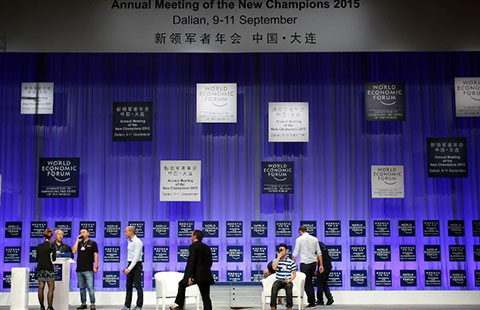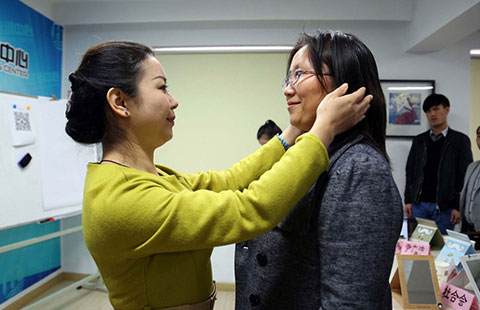China's further step toward market-oriented exchange rate
(Xinhua) Updated: 2015-08-14 10:14WASHINGTON - China's recent move to improve its exchange rate formation system marked the country's further step toward a market-oriented exchange rate system and the depreciation of the Chinese currency has been misinterpreted by some critics, experts said.
The People's Bank of China (PBOC) on Tuesday announced the decision to improve its central parity system, which is the starting point for daily forex trading, to better reflect market development in the exchange rate between the Chinese yuan against the US dollar. Following the decision, the Chinese currency, yuan, fell sharply in value on the following days.
"China's central bank took a potentially major step toward a more market-determined exchange rate," Nicholas Lardy, senior fellow at the Peterson Institute for International Economics (PIIE) , said in an article published on the think tank's website.
The action taken by China, far from being a step to manipulate its currency, is actually an effort to let the yuan fluctuate according to the dynamics of the exchange markets, said the expert. He expected the move could lead to greater volatility and two-way movement in the value of the yuan against the US dollar.
China's move surprised the market and prompted the lowest valuation of the yuan since October 2012. The PBOC described the sharply lower rate as a "one-off" adjustment that has bridged the previously accumulated differences between the central parity rate and the market rate.
Daniel Rosen, partner of the consulting firm Rhodium Group, on Thursday said in a research note that the fact that China has cut interest rates to shore up the economy while the US Federal Reserve is going to raise benchmark interest rate soon is forcing the yuan to abandon the "nominal rate stability" and to depreciate against the US dollar.
US Treasury also admitted in its semiannual report on international economic and exchange rate policies in April that the yuan was under pressure against the US dollars in view of China's net capital outflows in recent quarters and the country's moves to cut interest rates. Despite the depreciation pressure, the yuan real effective exchange rate has been appreciated greatly since the end of 2014.
Some Fed officials also believed the China's move might be appropriate. New York Fed president William Dudley said on Wednesday that "obviously if the Chinese economy is weaker than maybe what the Chinese authorities anticipated, it's probably not inappropriate for the currency to adjust in consequence to that weakness."
Following the sharp adjustment of the yuan in value, some critics argued that the move suggested the Chinese economy is weakening and that it was part of China's efforts to boost its exports against the background of slowing economy.
However, Lardy considered the evidence in favor such kind of arguments "fairly weak". He said in a PIIE's interview on Thursday that China could have boosted its exports and growth with a cheaper currency two years ago.
The critics have misinterpreted China's recent move by overlooking the fact that service sector has become the driver for growth and paying too much attention on the slowing industrial data, said Lardy, adding that the Chinese economic growth remains stable at 7 percent despite the slowing industrial data, and China's growth model has changed with service sector now as the driver of the growth.
Rosen also pointed out that "Beijing cares more about avoiding capital flight driven by depreciation concerns than it does about boosting exports with a cheaper currency."
Actually, China's move has been welcomed by some international institutions. The International Monetary Fund (IMF) described in a recent statement that the Chinese central bank's move as "a welcome step," saying a more market-oriented exchange rate would facilitate the SDR (Special Drawing Rights) operation if the yuan was included in the basket.
Greater exchange rate flexibility is important for China as the country strives to give market forces a decisive role in the economy and is rapidly integrating into global financial markets, the IMF said. It also said that China can and should aim to achieve an effectively floating exchange rate system within two or three years.
- 2015 China International Fair for Investment and Trade kicks off in Xiamen
- China's commodity imports robust in Jan-Aug period
- China stocks rebound 2.92%
- 2015 China box office already past 2014 total
- China foreign trade decline widens in August
- Interview: JP Morgan's senior executive bullish on China
- Innovation, development the focus for NZ mayors
- Lives of freelancers

















